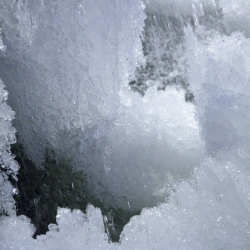
The McMurdo Dry Valleys form the largest ice-free region in Antarctica. They also make up the coldest and driest environments on the planet. Yet, despite these extreme conditions, the valleys’ surface is home to a large diversity of microbial life. Now, new evidence suggests that a network of salty water exists below the surface.
The finding isn’t just exciting for Earth ecologists, however; planetary scientists are intrigued as well. Indeed, finding salty liquid water below Antarctica provides strong support for the idea that Mars, an environment that resembles Antarctic summers, may have similar aquifers beneath its surface, aquifers that could support microscopic life.
"[Before this study], we didn’t know to what extent life could exist beneath the glaciers, beneath hundreds of meters of ice, beneath ice covered lakes and deep into the soil," says Ross Virginia, an ecosystem environmentalist at Dartmouth College and a co-author of the study, published in Nature Communications today. This study opens up "possibilities for better understanding the combinations of factors that might be found on other planets and bodies outside of the Earth", including Mars.
Approximately 4.5 billion years ago, 20 percent of the Martian surface was likely covered in water. Today, Mars may still be home to small amounts of salty liquid water, which would exist on the planet’s soil at night before evaporating during the daytime. Taken together, these findings are pretty exciting for those who hope to discover life on Mars, water, after all, is a requirement for life.
Unfortunately, researchers have also pointed out that the Martian surface is far too cold for the survival of any known forms of life. That’s why some scientists have started to wonder about what may lie beneath the Martian surface. If the extreme environment conditions found in Antarctica’s subsurface contains all the elements necessary for life, it’s possible that the Martian subsurface might as well.
